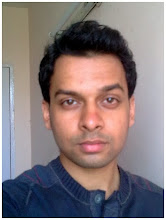Collective Bargaining in India has been the subject matter of industrial adjudication since long and has been defined by our Law Courts. In Karol Leather Karamchari Sangathan v. Liberty Footwear Company3 the Supreme Court observed that,“Collective bargaining is a technique by which dispute as to conditions of employment is resolved amicably by agreement rather than coercion."
According to the Court, the Industrial Disputes Act, 1947 seeks to achieve social justice on the basis of collective bargaining. In an earlier judgment in Titagarh Jute Co. Ltd. v. Sriram Tiwari , the Calcutta High Court clarified that this policy of the legislature is also implicit in the definition of ‘industrial dispute'.
In Ram Prasad Viswakarma v. Industrial Tribunal 4the Court observed that, "It is well known how before the days of ‘collective bargaining', labour was at a great disadvantage in obtaining reasonable terms for contracts of service from its employer. As trade unions developed in the country and Collective bargaining became the rule, the employers found it necessary and convenient to deal with the representatives of workmen, instead of individual workmen, not only for the making or modification of contracts but in the matter of taking disciplinary action against one or more workmen and as regards of other disputes."
In Bharat Iron Works v. Bhagubhai Balubhai Patel 5, it was held that “Collective bargaining, being the order of the day in the democratic ,social welfare State, legitimate trade union activities, which must shun all kinds of physical threats, coercion or violence, must march with a spirit of tolerance, understanding and grace in dealings on the part of the employer. Such activities can flow in healthy channel only on mutual cooperation between the employer and the employees and cannot be considered as irksome by the management in the best interests of its business.
Dialogue with representatives of a union help striking a delicate balance in adjustments and settlement of various contentious claims and issues."
These definitions only bring out the basic element in the concept i.e., civilized confrontation between employers and employees and the whole process is regulated by statutory provisions.
According to the Court, the Industrial Disputes Act, 1947 seeks to achieve social justice on the basis of collective bargaining. In an earlier judgment in Titagarh Jute Co. Ltd. v. Sriram Tiwari , the Calcutta High Court clarified that this policy of the legislature is also implicit in the definition of ‘industrial dispute'.
In Ram Prasad Viswakarma v. Industrial Tribunal 4the Court observed that, "It is well known how before the days of ‘collective bargaining', labour was at a great disadvantage in obtaining reasonable terms for contracts of service from its employer. As trade unions developed in the country and Collective bargaining became the rule, the employers found it necessary and convenient to deal with the representatives of workmen, instead of individual workmen, not only for the making or modification of contracts but in the matter of taking disciplinary action against one or more workmen and as regards of other disputes."
In Bharat Iron Works v. Bhagubhai Balubhai Patel 5, it was held that “Collective bargaining, being the order of the day in the democratic ,social welfare State, legitimate trade union activities, which must shun all kinds of physical threats, coercion or violence, must march with a spirit of tolerance, understanding and grace in dealings on the part of the employer. Such activities can flow in healthy channel only on mutual cooperation between the employer and the employees and cannot be considered as irksome by the management in the best interests of its business.
Dialogue with representatives of a union help striking a delicate balance in adjustments and settlement of various contentious claims and issues."
These definitions only bring out the basic element in the concept i.e., civilized confrontation between employers and employees and the whole process is regulated by statutory provisions.

Comments
Post a Comment